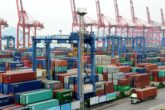June 13, 2016
The U.S.-Japan Alliance: Responding to China’s A2/AD Threat
In this paper, Japan Maritime Self-Defense Force Vice Admiral (Ret.) Yoji Koda looks into China’s regional and underlines the importance of a closely knit U.S.-Japan alliance that can both strengthen U.S. presence in the region and complement military capabilities to counter the threat from China. Koda defines the A2 and AD threat separately, with ASBMs, submarine forces, counter-domain superiority as A2 efforts targeting U.S. force flow into the region, and land attack missiles, special force sabotage, island seizure as AD efforts targeting U.S. forces already postured within the region. His prescription is to develop countermeasures such as missile defense capabilities to offset the A2/AD threat, while leveraging the alliance’s current advantages to exploit China’s vulnerability and impose cost.
The report is available online.
More from CNAS
-
Trump Administration Realises That The Tariff Strategy Has Backfired: Lisa Curtis
Trump administration realises that the tariff strategy has backfired, says Lisa Curtis, senior fellow and program director at the Center for a New American Security.Watch the ...
By Lisa Curtis
-
Ep 187: Richard Fontaine on the “Reverse Kissinger”
Richard Fontaine, CEO of the Center for a New American Security (CNAS) and co-author of No Limits? The China-Russia Relationship and U.S. Foreign Policy, joins the show to dis...
By Richard Fontaine
-
A Stroll Through the Indo-Pacific, the Most Important Region in the World
In this episode, we get into what’s driving the Indo-Pacific’s security dynamics, from China’s threats to Taiwan to AUKUS and the Quad to stability (or lack thereof) on the Ko...
By Lisa Curtis
-
Assessing China’s Nuclear Decision-Making
China’s rapid nuclear buildup is raising questions about how the country makes decisions related to nuclear weapons. This policy brief analyzes that trend by presenting three ...
By Jacob Stokes




